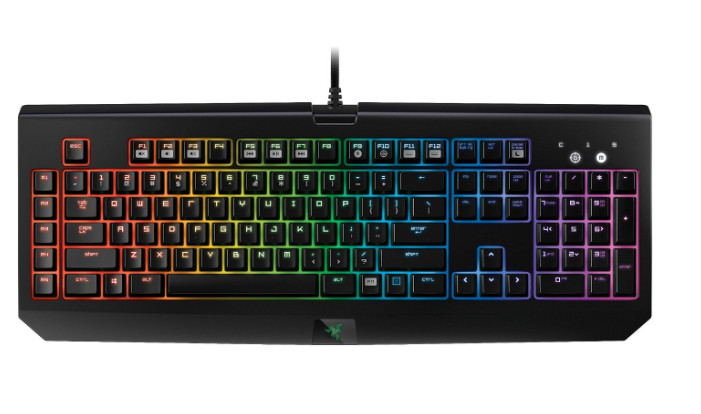PC graphics cards must find the perfect balance between performance and quality if they want to survive the upcoming generation of consoles. AMD is already developing the future of these devices: the 4k.
Introduction
PC is without a doubt the best gaming platform. It’s obviously more expensive and complex than a console, and it has its own particular issues, but it has three basic advantages over consoles: incredible graphics, better online and high versatility.
AMD’s newest GPUs, released this October, are setting a new trend for graphics cards, especially with the release of the formidable Radeon R9 290X, the latest high-end component from this manufacturer.
Radeon R9 290X: Specs
The new Radeon R9 290X is a 28-nm graphics card based on AMD’s GCN architecture that takes the user to a whole new level compared to previous generations. Thanks to its new architecture and features, it’s, as of today, the most powerful graphics cards ever created.
With the latest advancements of the gaming world in mind, it features ultra HD resolution; this won’t be commonplace in the near future, but without a doubt AMD is setting a trend: this is the future of PC gaming. With its 3840×2160 resolution, you can connect up to four 1080p screens to it; again, it’s AMD’s new architecture what makes all of this possible.
One of the first changed is the support for DirectX 11.2, which has been released alongside Windows 8.1. This powerful card also features efficient power-saving modes, so it’s powerful only when it needs to be, because AMD understands a PC is more than just a gaming platform.
This new architecture makes it the most powerful GPU to date. The new Radeon R9 290X is capable of generating up to 5 Teraflops of computing power in single-precision floating point . To this incredible power, you can add several new features designed to work with these new massive resolutions. This is done with a second 512-Bit bus made by AMD -the Radeon 2900 was the first one to have one of these-, but now it features high-speed GDDR5 memory capable of offering a bandwidth of 320GB/s. And all of this is using just 1250MHz memory, 1500MHz ones can be easily found nowadays. It also features a 4-GB frame buffe and classic rendering –more than 4000 million triangles per second; amazing specs thanks to this architecture that gather more than 6000 million transistors.
But there’s more: the Radeon R9 290X works with frequencies of up to 1GHz and the power-saving modes are capable of reducing the consumption to 5w when the card is not in use, even if you have more than one graphics card.
More instructions per clock cycle allow for up to 5.6TFlops, compared to the 4 of the previous generation. It also has 176 texture units and the number of shader engines has gone from 2048 to 2816, an increase of almost 50 %.
Rasterisation units, also known as ROPs, have been duplicated, going from 32 to 64, an essential feature to run the most demanding games. We believe AMD has done all of this to beat their fiercest competitor, Nvidia’s Geforce GTX 780. Only time will tell which one will prevail.
The card as it is
Design-wise, this model is not too different from its older sisters. The dissipation block has been redesigned and there’s a steam chamber, otherwise, the card is pretty much identical to previous models. The reference model is square-shaped, but it has the same structure with an inclination in the back, something normal for Crossfire configurations to keep your GPUs properly cooled. The design is simple, some may find this disappointing, especially considering how elaborate Nvidia’s designs tend to be.
This card now features a more powerful and less restrictive Eyefinity design. This generation of Eyefinity connectivity allows you to use up to six monitors per graphics card using every connector simultaneously, without depending on Displayport 1.2. This card does no support HDMI 2.0 so if you want to use a 4k monitor, you’ll only get 30 Hz, unless you use two connectors at the same time. Now you can use both DVI and HDMI simultaneously, and thanks to the Displayport 1.2 to DVI or HDMI connectors, you can connect up to three monitors to it without the need for Displayport.
AMD has opted for a more classic approach in regards to connectors, they have traded most of the Displayport connectivity options to feature the classic dual-link DVI and HDMI connectors. They’re also conventional-sized, not “mini” or “micro” versions.
Energy-wise, its design is identical to the Radeon 7970, with two PEG connectors -8 and 6-pin, respectively-, which offers and additional power of up to 230w compared to the PCI Express, so the maximum consumption of this card must be around 250w, something our tests confirmed.
If you take a closer look at the picture, you may notice something is missing: the Crossfire connector. That’s because this new generation doesn’t need to be connected physically, instead AMD has opted for a synchronization system based on PCI Express 3.0, and so our cards don’t need to be physically connected to each other. According to AMD, this doesn’t translate into a negative impact in performance –quite the opposite, in fact-. We’re waiting for our chance to see it for ourselves.
Mantle, TrueAudio, ultra High Resolution
TrueAudio is AMD’s solution to offer the best sound quality for PC users. Xbox and PS3 games feature high-quality sound; ever since Microsoft stopped the development of DirectAudio, surround sound for PC became nothing but a dream, not to mention the end of the days of EAX’s Creative.
AMD wants to change this and offer high-quality surround sound to PC users, like the one you can enjoy in any console game. The best part about this is that this process is not done by our CPU, optimizing it and making it faster, and offers sound quality that rivals that of any console. This technology requires a dedicated silicon for it, it’s not executed by the graphics card, and for now it’s only features by models like the Radeon R9 290X/290 and the Radeon R7 260X. The user doesn’t have to change their current sound system and features high-definition 3D audio effect –although, obviously, the better our speakers/headphones are, the higher the sound quality will be-. Many compatible games are expected to be released son, so users of this technology won’t have to wait too much to see it –and hear it- in action.
4K is the future of gaming. A future that’s way too far away for consoles, even for the newest ones that have just arrived, but PC can already start enjoying this future. GPUs like this one, or using more than one of them, make PC the only platform capable of handling 4k resolution (3840×2160). This technology has been around for a while, that’s true, but no standard has been ser. Most TVs work at 30Hz to avoid the limitations of HDMI, but 30Hz is not enough for PC. Most 4k monitor son the market right now are actually two 1920×2160 screens: with two HDMI 1.4 ports, you can form one 3840×2160 picture with a rate of 60Hz.
You can also use Displayport, but this is not very common in TVs. In any case, the point is that a lack of a standard means you have to make a single picture out of two monitors. This is nothing new for Eyefinity users, though, and in fact AMD has been working to make this process as easy and intuitive as possible for everyone.
AMD’s objective is to have a VESA standard to make everything automatic in the future. PC is the pioneering platform in this regard, and graphics cards like this one are just the beginning, the first steps into the future. 4k screens cost dollars now, but they will surely become affordable in a couple of years, and PC users will undoubtedly be the first to enjoy them.
Mantle is the bridge between PC and the latest generation of consoles. This technology is a new API from AMD designed to make porting from consoles to PC and vice verse easier and simpler; all the developers have to do is recompile.AMD knows the main two consoles use their architecture, so optimizing games is their priority. However, based on what we’ve seen, we don’t think this technology is essential for cards as powerful as the Radeon R9 290X we’re reviewing today. It will be essential, however, for those APU (CPU+GPU) AMD already has on the market, as well as mid-level graphics cards. Mantle will make them faster, more efficient and will allow for better performance in not so powerful cards.
New hardware control panel. Overdrive
AMD’s classic double BIOS is also present here. This time –and considering the variable frequencies of this card-, AMD has designed two different modes: standard, for users who want high-end performance and noise control, also kwon as “Quiet Mode”, the one activated by default; and “Uber” mode, designed for overclockers and advanced users who want to make the absolute most out of this powerful and amazing graphics card. The latter, of course, is noisier; it’s also recommended for Crossfire enthusiasts to get the best performance possible.
The new features aren’t limited to hardware, though: AMD has redesigned their overclocking system, known as Overdrive. It’s not only much more powerful, but also more intuitive. Instead of frequency, it measures the performance with percentages, so you’re always in full control of the performance of your components. It also features a two dimensional graphic where you can see the relation between the performance of the GPU and its consumption in real time, again, all of this with percentages. Another interesting new feature: If you choose to manually manipulate your fan, the software doesn’t offer a fixed frequency, but you can configure it to suit your needs and find your balance between noise and performance.
This GPU has been designed to work steadily at 95 degrees while being as silent as possible. Naturally, lower temperatures mean better performance, so it seems t won’t be long until performance world records and benchmarks are broken by this card. High temperatures have no effect on the chip’s durability, since it’s usual for manufacturers to design their products with high temperatures in mind, since that reduces noise and, for example, in the case of a laptop, makes the use of cooling system and fans less common and not absolutely necessary, which translates into smaller energy consumption.
With this card, it’s easy to get an increase in performance 10% higher for the GPU and up to 15% higher for the memory without having to change out cooling system –your computer will only be a little noisier-.
Performance Tests. I
MS Flight. 2560×1440. High quality.
BattleField 3. 2560×1440 Ultra Quality.
Battlefield 4 Beta. 2560×1440 Ultra Quality.
F1 2012. 2560×1440. Ultra Quality. 8x FSAA and 16x AF.
Heaven Benchmark 4.0. Extreme Tesselation, 8x FSAA. 1920×1080.
Performance Tests. II
Crysis 3. High Quality. 2560×1440.
Futuremark 3Dmark. Fire Strike.
Futuremark 3Dmark. Fire Strike Extreme.
Bioshock Infinite. Ultra Quality. 2560×1440.
Metro Last Light. Quality Very High, 2560×1440. SAA 2x, Tessellation Normal, Normal Blur.
Analysis and conclusion
The Radeon 290X is not the most powerful single-chip GPU, but the Titan, which is still the world’s most formidable graphics card and costs around 900 dollars. So the biggest competitor of the card we reviewed today is the Geforce GTX 780. Nvidia’s card is bested by the Radeon R9 290X in performance and price: The Radeon R9 290X will cost 580 dollars, while the cheapest Geforce GTX 780 can be found for approximately 500 dollars. This means the Radeon R9 290X is cheaper and faster.
As for the newest, most groundbreaking features, they’re just the beginning of something bigger. Since there are still no games that support TrueAudio and Mantle, we haven’t been able to enjoy these new technologies. However, they will become more and more common as time goes by, so it’s just a matter of waiting. We absolutely love the new control software of these graphics cards, and the performance is simply top-notch. All these features also translate into greater computing and processing power and, therefore, better multimedia handling. This is a very powerful chip that still has a lot more to offer as new features and technologies are developed and supported. If you’re looking for a powerful and robust graphics cards, this is without a doubt the graphics card for you thanks to its astonishing performance-price ratio.






